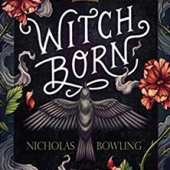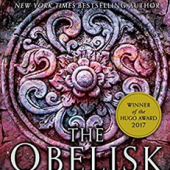
In Homer’s account in The Odyssey, Penelope–wife of Odysseus and cousin of the beautiful Helen of Troy–is portrayed as the quintessential faithful wife, her story a salutary lesson through the ages. Left alone for twenty years when Odysseus goes off to fight in the Trojan war after the abduction of Helen, Penelope manages, in the face of scandalous rumours, to maintain the kingdom of Ithaca, bring up her wayward son, and keep over a hundred suitors at bay, simultaneously. When Odysseus finally comes home after enduring hardships, overcoming monsters and sleeping with goddesses, he kills her suitors and–curiously–twelve of her maids.
In a splendid contemporary twist to the ancient story, Margaret Atwood has chosen to give the telling of it to Penelope and to her twelve hanged Maids, asking: “What led to the hanging of the maids, and what was Penelope really up to?” In Atwood’s dazzling, playful retelling, the story becomes as wise and compassionate as it is haunting, and as wildly entertaining as it is disturbing. With wit and verve, drawing on the storytelling and poetic talent for which she herself is renowned, she gives Penelope new life and reality–and sets out to provide an answer to an ancient mystery.
My Review
Ah, Atwood. I’ve been reading her works since my eighth grade teacher gifted me her Journals of Susanna Moodie with an inscription telling me that she looked forward to the day when I would bring her my own published work. I’ve had a love/hate relationship with Atwood ever since.
But The Penelopiad was new to me. My daughter is reading it for her AP English class and she asked me if I could hold on to it for her when we were out this past weekend. It was one of those moments when I found myself early for a meeting and sitting there with my Americano. I had a choice: I could either read the literary book my kid just gave me, or play the Dot game incessantly. I chose to read.
And that was it. I was hooked.
Now if you’ve read some of my other reviews, you’ll know I’m a huge fan of fractured fairy tales. And while Greek mythology and a retelling of the Odyssey isn’t exactly a fairy tale, it has elements of what I love. Atwood tells the story completely from the point of view of Penelope and the twelve maidens. It is classically Atwood and absolutely brilliant.
The academic in me, recommends reading The Odyssey before The Penelopiad but it isn’t really necessary. If you’ve seen Odysseus: Voyage to the Underworld (a really sh*tty movie) or had a peek at Percy Jackson (a really good series) you’ll recognize some of the stories. But the real treasure in The Penelopiad is that it is told from Penelope’s point of view (after her death).
Only Atwood would take the quintessential hero story and say, wait a minute! What about the 15-year old girl he married and dragged off to his remote island and then left there with a baby while he gallivanted around the countryside for TWENTY years? What about HER story?
This telling is a feminist re-imagination of the legend. In classic Atwood style, it re-imagines the tale we think we know and forces the reader to question what the true telling of The Odyssey might be. (If you are unfamiliar with Atwood’s work, shame on you! Get reading! But she has taken many, many texts and dug the subtext out and ran with it.)
This book has rekindled my love affair with Atwood’s work. I highly recommend you check it out.











